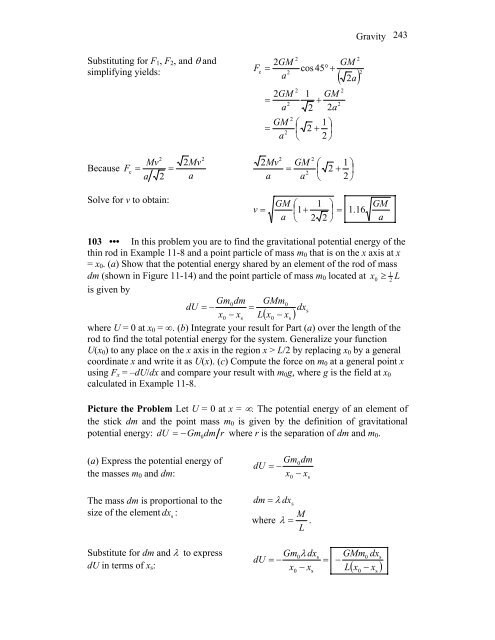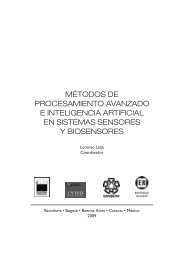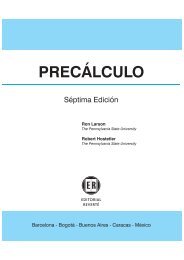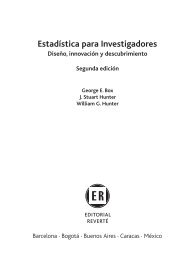Chapter 11 Gravity
Chapter 11 Gravity
Chapter 11 Gravity
You also want an ePaper? Increase the reach of your titles
YUMPU automatically turns print PDFs into web optimized ePapers that Google loves.
Substituting for F1, F2, and θ and<br />
2<br />
2GM<br />
GM<br />
F = cos45°<br />
+<br />
simplifying yields: c 2<br />
a<br />
( 2a)<br />
Because<br />
2GM<br />
= 2<br />
a<br />
GM<br />
= 2<br />
a<br />
2<br />
2<br />
⎛<br />
⎜<br />
⎝<br />
1 GM<br />
+<br />
2 2a<br />
1 ⎞<br />
2 + ⎟<br />
2 ⎠<br />
2<br />
2<br />
Mv 2Mv<br />
Fc<br />
a 2 a<br />
= = 2<br />
2<br />
2Mv<br />
GM ⎛ 1 ⎞<br />
= ⎜ 2 +<br />
2 ⎟<br />
a a ⎝ 2 ⎠<br />
Solve for v to obtain:<br />
GM ⎛ 1 ⎞<br />
v = ⎜1<br />
+ ⎟ = 1.<br />
16<br />
a ⎝ 2 2 ⎠<br />
2<br />
2<br />
<strong>Gravity</strong><br />
2<br />
2<br />
GM<br />
a<br />
103 ••• In this problem you are to find the gravitational potential energy of the<br />
thin rod in Example <strong>11</strong>-8 and a point particle of mass m0 that is on the x axis at x<br />
= x0. (a) Show that the potential energy shared by an element of the rod of mass<br />
1<br />
dm (shown in Figure <strong>11</strong>-14) and the point particle of mass m0 located at x0 ≥ 2 L<br />
is given by<br />
Gm0dm<br />
GMm0<br />
dU = − = dxs<br />
x0<br />
− xs<br />
L(<br />
x0<br />
− xs<br />
)<br />
where U = 0 at x0 = ∞. (b) Integrate your result for Part (a) over the length of the<br />
rod to find the total potential energy for the system. Generalize your function<br />
U(x0) to any place on the x axis in the region x > L/2 by replacing x0 by a general<br />
coordinate x and write it as U(x). (c) Compute the force on m0 at a general point x<br />
using Fx = –dU/dx and compare your result with m0g, where g is the field at x0<br />
calculated in Example <strong>11</strong>-8.<br />
Picture the Problem Let U = 0 at x = ∞. The potential energy of an element of<br />
the stick dm and the point mass m0 is given by the definition of gravitational<br />
potential energy: = −Gm<br />
dm r where r is the separation of dm and m0.<br />
dU 0<br />
(a) Express the potential energy of<br />
Gm0dm<br />
dU = −<br />
x − x<br />
the masses m0 and dm: 0 s<br />
The mass dm is proportional to the<br />
size of the element dxs<br />
:<br />
Substitute for dm and λ to express<br />
dm = λ dxs<br />
M<br />
where λ = .<br />
L<br />
Gm0λ<br />
dx<br />
dU = −<br />
dU in terms of xs: x − x L(<br />
x − x )<br />
0<br />
s<br />
s<br />
=<br />
GMm<br />
−<br />
0<br />
0<br />
dx<br />
s<br />
s<br />
243

















